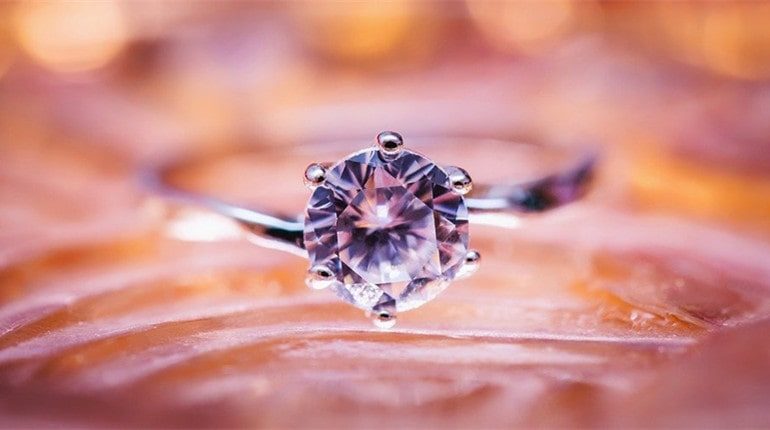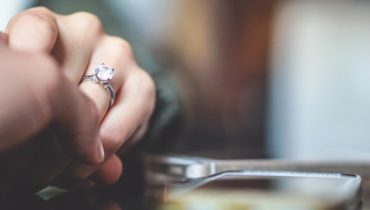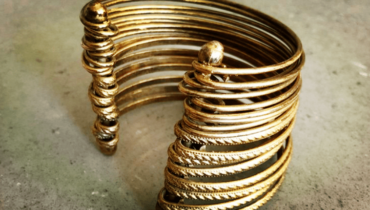Purchasing a diamond ornament can be an emotional and expensive undertaking, considering that diamond is one of the most valuable gemstones in the world. Unfortunately, many people have been conned large amounts of money by unscrupulous jewelers who sell fake diamonds.
Therefore, you need to be sure that the diamond you are purchasing is real before you open your wallet. In this article, I will show you how to tell if a diamond is real.
4 Types of Diamonds
Before you head to the store to buy a piece of diamond, you need to understand that not all diamonds are created equal.
It is also important to note that in addition to the 4C’s (clarity, cut, carat, and color), there are many other differences that separate diamonds, including the physical and chemical properties as well as the atomic makeup of each type of diamond. Furthermore, only 20 percent of most diamonds are used as a gemstone.
1. Mounted Diamond
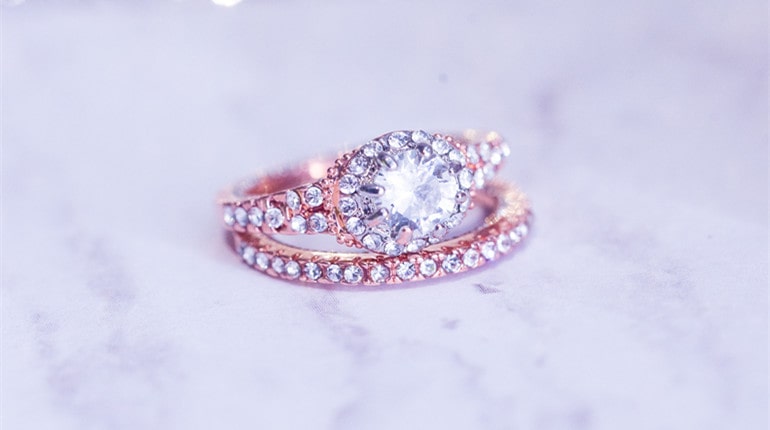
A mounted diamond is a piece of diamond gemstone that has been fitted into a piece of jewelry. For instance, the piece of diamond found on a wedding or engagement ring is a mounted diamond. There are many ways of mounting diamond stones into a piece of ornament, and each method reflects the diamond’s type, size, quality, and the likely effect it might have.
Once a diamond has been mounted into a piece of jewelry, it is not easy to determine its clarity and color with the same degree of certainty as when it has not been mounted. At times the color of the piece of jewelry can affect the color of the mounted diamond, allowing unscrupulous jewelers to mount pieces of diamond with a substandard color. Some crooked jewelers use this trick to hide imperfections in their mounted diamonds.
2. Unmounted Diamond
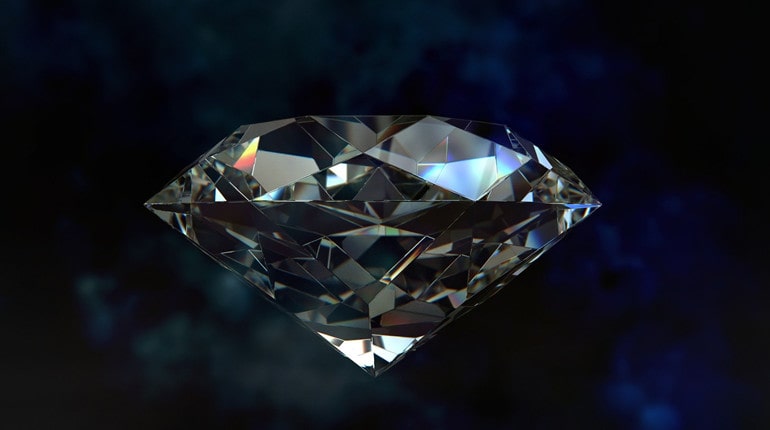
Also referred to as a loose diamond, an unmounted diamond is a piece of diamond gemstone that has not been mounted into a piece of jewelry. Experts argue that an unmounted diamond is less expensive than a mounted diamond. In fact, most people prefer to buy unmounted diamonds and mount them into different ornaments as they please.
Another benefit of purchasing unmounted diamonds is that it is very easy to assess their quality because they are not concealed in any piece of jewelry. Therefore, it is very hard for unscrupulous jewelers to conceal flaws in an unmounted diamond.
3. Natural Diamond
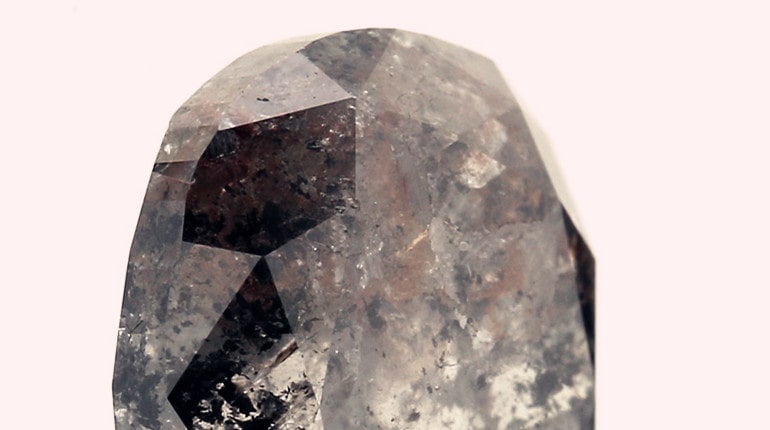
Image source: Pinterest
A natural diamond is a piece of diamond in its crude form. Diamonds are made from carbon and are the hardest natural substance known to man. A natural diamond forms at very high temperatures and under immense pressure between 85 and 125 miles in the mantle of the earth. Studies have revealed that it takes 1-3 billion years for a single piece of diamond to form in the earth.
4. Fake Diamond
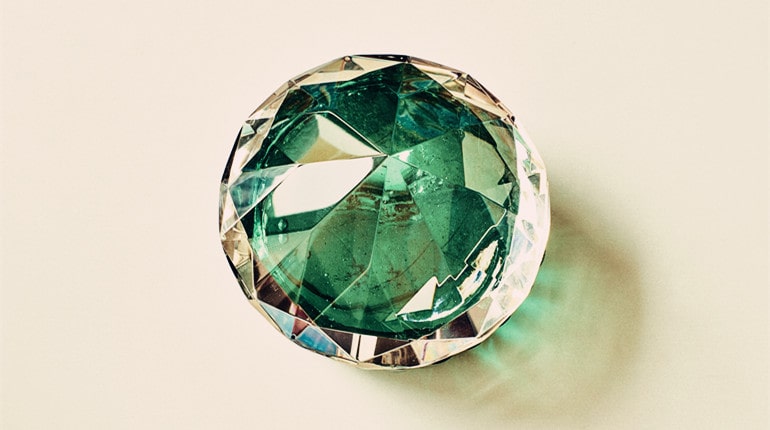
A fake diamond is a stone that has a different chemical composition from a real diamond. This imitation can be either natural or synthetic. Unfortunately, synthetic diamonds have the same chemical configuration as real diamonds.
Also known as diamond simulants, fake diamonds are commonly used in jewelry. They are relatively cheaper than real diamonds and scratch more easily. Unlike real diamonds, fake diamonds lose their brilliance over time.
11 Different Methods of Testing Diamonds
· At-Home Diamond Tests
1. Water Test
This is one of the easiest and simplest methods of testing diamonds because it doesn’t require any hi-tech equipment or specialized expertise. You just need to fill ¾ of a normal-sized glass with clean water and carefully drop the unmounted diamond into the glass.
If the diamond completely sinks to the bottom of the glass, it is real. But if it floats, it’s a fake. Real diamonds have very high density and therefore they do not float on water.
2. Fog Test
Since real diamonds conduct heat effectively, they should disperse heat immediately. So, just hold the piece of diamond or diamond ring between your fingers and blow a puff of air on it. Because of the moisture and heat in your breath, a light fog will form on the gemstone.
If the fog disappears at once, the diamond is real. But if the takes a few seconds to clear, you are most likely holding a fake diamond.
3. Heating
Since diamonds are made of very strong materials, they are unresponsive to excess heat. So, you can test the authenticity of a piece of a diamond by heating it for about 40 seconds and then dropping it directly into a glass of cold water. If it shatters, it is a fake.
A real diamond won’t show any reaction to the change in temperature. The instant expansion and contraction of heat cause weak materials such as cubic zirconium or glass to crack and break. Since a natural diamond is the hardest material in the world, it is completely resistant to such heat tests.
4. Refractivity
When light hits the pavilion (angled lower parts of the stone) of a real diamond, it bounces back and is refracted up through the diamond’s table (the upper, flat surface) as seen with a naked eye. This sparkle is referred to as brilliance. You can test a diamond’s refractivity with a newspaper page.
Just place the stone on a lettered page of a newspaper with its flat side down. Remove any shadows around the stone and ensure the light is completely bright. If you can still read the letters of the paper — even faintly — the diamond is fake. The facets of a real diamond refract light in different directions, making it difficult for you to see through the diamond.
· Expert Diamond Tests
5. Loupe Inspection
Every diamond inspection expert has a loupe — the special magnifying glass used for examining gemstones and jewels. The expert will look through the loupe to identify blemishes and other imperfections. A real diamond should have minor imperfections commonly referred to as inclusions. But fake diamonds are normally perfectly built.
6. Thermal Conductivity
Some experts use a thermal conductivity meter or probe to test a stone’s thermal conductivity. Because real diamonds are effective heat conductors, they will disperse heat fast when heated. So, if your diamond disperses heat slowly, it’s a fake.
7. High Profile Weighing
With a fine-tuned scale, a professional will be able to detect even the smallest variances in weight. Normally, real diamonds weigh less than fake diamonds. Unfortunately, this difference in weight can only be detected by special scales used for weighing carats.
8. Electrical Conductivity
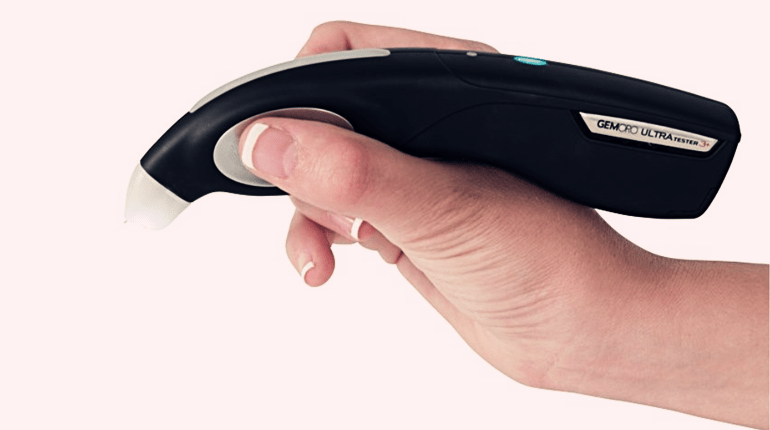
Image source: Pinterest
With an electricity tester, a professional is able to test the electrical conductivity of a real diamond. It’s important to note that diamonds have a higher electrical conductivity than other stones. So, if your stone doesn’t show conductivity, it is not real.
9. Microscope

Image source: Pinterest
A power microscope helps a gemologist to analyze the tiny details of a diamond stone, allowing them to identify the inclusions in real diamonds. The best microscope should have at least a 1200x magnification.
10. X-Ray Analysis
An x-ray analysis enables the expert to examine the internal molecular traits of a diamond. An x-ray machine has the ability to detect the radiolucent molecular and radiopaque molecular structures of the diamond. Real diamonds have radiolucent molecular structures, while fake ones have radiopaque molecular structures.
11. GIA Certificate
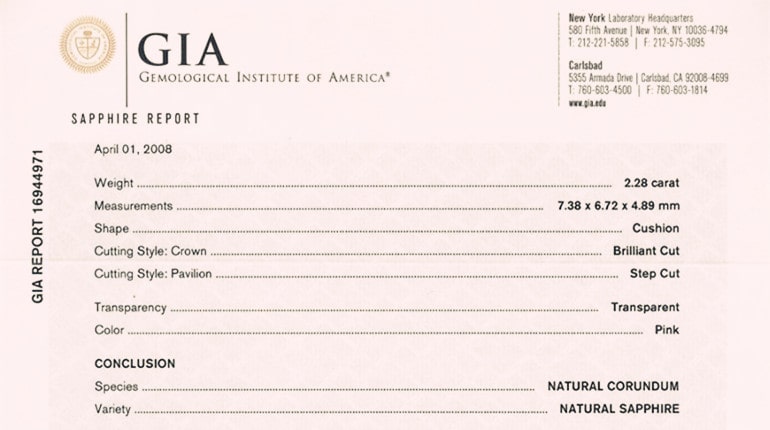
Image source: Pinterest
A GIA certificate is a document issued by the Gemological Institute of America to prove the authenticity of a diamond. GIA is the world’s primary authority in autonomous 3rd party diamond certification. Every GIA-certified diamond has to be examined by at least four highly trained gemologists and diamond graders.
At every step of the verification process, the diamonds have to be independently graded by a more senior member of the institute. The institute’s main objective is to build consumer’s trust in diamonds by offering jeweler and consumer education and performing careful research on diamond authenticity.
Tips for Buying a Real Diamond
When you are buying a diamond for the first time, things can become very confusing and you end up buying a fake one. Here are some simple tips to help you make the right choice.
1. Compare prices: Naturally, real diamonds are more expensive than fake ones. So, before you make a purchase, compare different prices to get an idea of how much a good diamond should cost. It is also important to note that the price of a diamond is determined by its quality and size. So, the larger and superior the stone, the higher the price.
2. Review the four Cs: The best way to know the quality of a diamond is to review its four Cs (clarity, cut, color, and carat). Of course, there are many other aspects of the stone that you need to check, but the four Cs should give you the first signs of the stone’s quality.
3. GIA certification: Every real diamond should have a grading report from a reliable laboratory. Organizations such as the Gemological Institute of America (GIA) are known to offer credible diamond grading reports in an effort to build trust. They also offer certificates ascertaining the authenticity of diamonds. So, look for such certificates.
Frequently Asked Questions
1. What are diamond inclusions?
Diamond inclusions are the tiny imperfections inside a diamond. Every natural diamond has some inclusion, most of which can only be viewed through a magnifying loupe or microscope.
2. How do I know if the diamond is conflict-free?
The only way you can know if a diamond is conflict-free is to inquire about its origin. You can also choose diamonds from non-conflict regions such as Botswana, Canada, Australia, Russia, and many others.
3. Should I buy diamonds online or in a store?
Although this is a personal choice, it is always good to buy your diamond from a store where they can do all the tests for you to ascertain its authenticity.
In Summary
I believe this article has provided you with in-depth knowledge of diamonds and the necessary adeptness at choosing the right diamond. Therefore, it’s my hope that you now know how to tell if a diamond is real.

